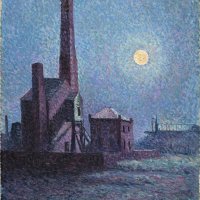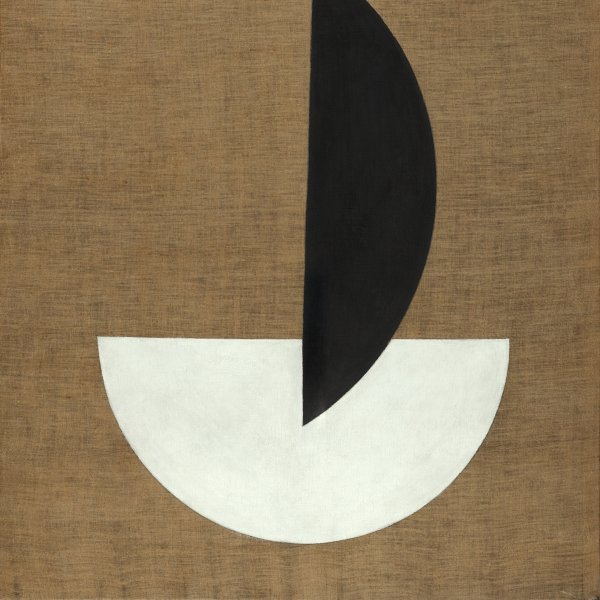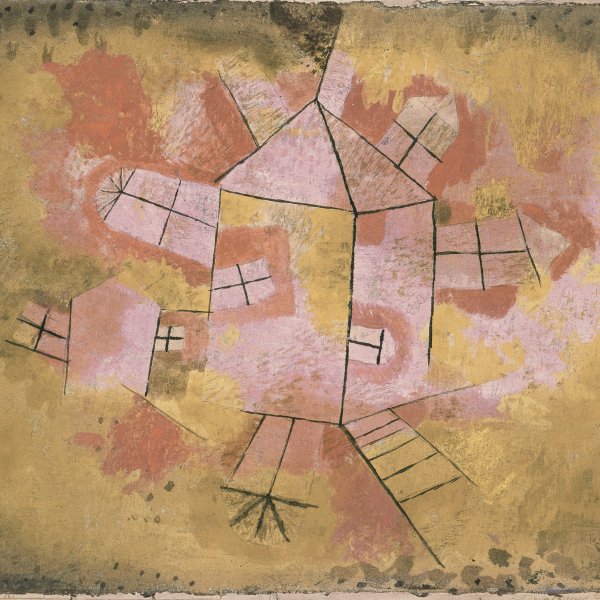Large Railway Painting
During his youth, the Hungarian artist László Moholy-Nagy was driven by his conviction that art could influence life, everyday affairs and the prevailing social structures to join the coalition of artists grouped around the radical magazine MA, published in Budapest between 1916 and 1919 by Lajos Kassák, which advocated a link between art and political activity. While serving in the Austro-Hungarian army during the Great War, in which he was wounded, he made numerous drawings inspired by military scenes and in 1919 had to seek exile in Germany for political reasons.
In the present painting in the Thyssen-Bornemisza collection, which was executed shortly after he arrived in Berlin and three years before he joined the Bauhaus as a teacher, the artist already displays his preference for abstract language and the influence of both Dadaism and Constructivism can be seen in his work. Moholy-Nagy firmly believed that art should adapt to the reality of the times and provide a response to new technological breakthroughs; the language of Russian Constructivism was therefore of use to him in achieving his aspirations. “The reality of our century is technology: the invention, construction and maintenance of machines, ” he wrote.
As in The Great Wheel dating from the same period, Large Railway Painting adopts a schematic composition of interpenetrating planes in which letters and geometric shapes are mixed. As may be deduced from the title, the work recreates the railway world through posts, conductor wires, and level crossing barriers, among other elements. The letter “E” refers to the word Eisenbahn, meaning railway in German.
Paloma Alarcó










